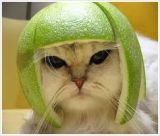- Forum
- Photography and Camera Forum
- Taking the Photo | Editing | The art of Photography!
- Editing and Presentation
- Printing digital: setting white point and black point?
Printing digital: setting white point and black point?
-
 Topic Author
Topic Author
- Heather4U
- New Kid On The Block
-
- Nikon d300s
- Followers: 11
- Posts: 36
-
Points:
0
Post #196249
My questions surround printing to chromogenic prints. I use WHCC where they use light printers to make traditional chemical prints.
1. Do I need to worry about the above issues? They seem like they might be only native to printers that spread ink. Are the light printers "tight" enough to allow pure white to exist in a print?
2. If they do have the same issues, does anyone have any tips to make the prints not look like crap. I've had to adjust the white point on many prints to WHCC to create separation, because I've wanted a pure white border, and the background of the print was a (255,255,255) white. But when I adjust the white point, the print loses contrast; I can never get it looking as good as it was before the white point adjustment. I never bother with the black point, maybe that's an issue, but it doesn't seem like it would be.
-

- effron
- Newbie
- Followers: 1623
-
Points:
129640
Post #196866
www.westcoastimaging.com/wci/page/info/photoshoptip/tip13.html
Why so serious?
-

- Henry Peach
- Apprentice
-
- I currently use a 5DII or Sony Nex-3 most of the time.
- Followers: 50
- Posts: 2925
-
Points:
16
Post #196960
As long as the histogram is tapering down at the ends then setting the black point to 0 and white to 255 still results in very few pixels in the entire photo reaching actual black or white. It shouldn't be a problem unless the histogram is really bunched up on one side or the other.
I do not have any experience with ink jet printing. I worked in both the BW and color darkroom, and now order chromogenic prints from my digital files. I disagree with your instructor. Most of my hand printed silver gelatin and chromogenic prints can be laid against unexposed white printing paper, and have similarly bright whites. I think actual black and white in photographic prints looks sharp and snappy, while highlights and shadows that don't quite fully reach the ends of the tonal scale tend to look dull. It's just opinion, not right or wrong. I think popular media suggests that sharp and snappy is generally more popular with photo viewers. If actual white cannot be achieved in the darkroom I'd dim the safe light and look for leaking enlargers. These are common problems in high school and college darkrooms.
There is a technique called flashing where paper is purposely pre-exposed to light to deal with negatives that have very dense highlights. Even with the pre-exposure the effects on the brightness of the highlights is not supposed to be noticeable to the print viewer.
- Forum
- Photography and Camera Forum
- Taking the Photo | Editing | The art of Photography!
- Editing and Presentation
- Printing digital: setting white point and black point?
Latest Reviews
The Fujifilm XT5 is a 40MP mirrorless camera capable of 6.2K video at 30p. With those specs, it’s an ideal choice for photographers needing a camera to pull double duty for imaging and video.
The Canon EOS R100 is an entry-level mirrorless camera introduced in 2023. But just because it’s an entry-level camera doesn’t mean it’s a bare-bones camera. Find out why in this review!
Nikon’s retro-looking Nikon Zfc is anything but retro. Under its classic body is a host of features and amenities that make it a worthwhile compact mirrorless camera for 2024.
The Canon EOS R50 is one of the newest R-system cameras from Canon. Is it worth your money? Find out all the details you need to know in this comprehensive review.
Forum Top Posters
-
1ropertjohn 2 posts
-
2Esseff 1 post
-
3alexcray 1 post
-
4Ted Baker 1 post
-
5Alfred_Pen... 1 post
-
6Colorado Mike 1 post
Latest Articles
To fill the frame means to expand the footprint of the subject in your shot. Get in close, zoom in, crop the image, or use other techniques to bring the subject to the forefront.
With these simple yet effective beginner photography tips, you can avoid some of the common mistakes beginners make and get improved results with your images.
Urban photography is a genre showcasing features in urban settings. You can photograph people, architecture, mass transit, and many other subjects. Learn how to do so in this guide!
The Nikon D850 might be an older DSLR, but it was ahead of its time when it debuted in 2017. That means it still has plenty of firepower to compete with today’s powerful mirrorless cameras.
The best beginner camera isn’t the same for everyone. That means having choice is of the utmost importance. In this guide, explore five excellent beginner camera options for 2024 and beyond.
Child portrait photography is a unique undertaking requiring special skills and talents to get the best results. Start mastering this photography niche with these essential tips!
The Fujifilm XT5 is a 40MP mirrorless camera capable of 6.2K video at 30p. With those specs, it’s an ideal choice for photographers needing a camera to pull double duty for imaging and video.
Using leading lines in photography helps improve the composition by drawing viewers in and leading their eye from the foreground to the background. Explore some fine examples of this in this guide!














